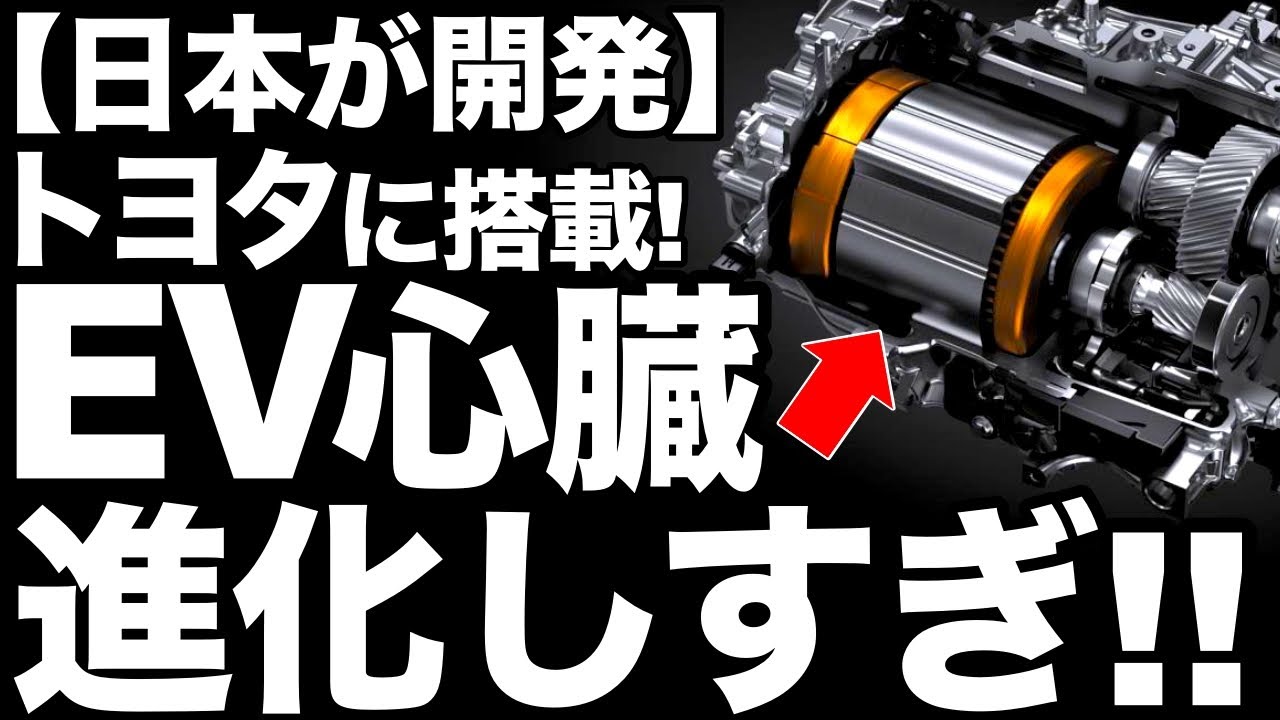トヨタがすごすぎる!充電不要EVを開発し、2025年実用化へ【ゆっくり解説】
Summary
Please replace the link and try again.
Takeaways
- 🚗 Toyota is developing a charge-free EV using Perovskite solar cells, a cutting-edge technology that eliminates the need for charging by harnessing solar power.
- 🌞 Perovskite solar cells, discovered by Japanese researchers in 2009, are flexible and can be applied to various surfaces, including buses and trucks, making them a promising next-generation energy source.
- 💡 The potential of Perovskite solar cells is significant due to their high power conversion efficiency, which has improved from 3% in early stages to over 25% in recent research, rivaling traditional silicon solar cells.
- 🌈 Perovskite solar cells can maintain high power generation efficiency not only in sunny conditions but also under cloudy skies or indoor lighting.
- 🏭 Charaenergetech, a startup company founded in 2018, is working on the practical application of Perovskite solar cells and has developed a film-type Perovskite solar cell with a module conversion efficiency of 19.4%.
- 🔑 Toyota's environmental challenge '2050' aims to tackle global environmental issues, including climate change and resource depletion, with one goal being the practical use of car-mounted solar power generation systems.
- 🚘 The collaboration between Toyota and Charaenergetech is expected to lead to the development of charge-free EVs, potentially revolutionizing the electric vehicle industry.
- 🔋 Toyota is also researching all-solid-state batteries, which promise higher energy density, safety, and performance compared to current lithium-ion batteries.
- 🔧 Toyota's innovative manufacturing techniques, such as the use of traditional Japanese mechanical devices in the production line, aim to improve efficiency and stability in battery production.
- 🌐 The Japanese government supports the development of Perovskite solar cells, aiming for a cost of 14 yen per 1kWh by the fiscal year 2030, and is considering their use in public facilities and offices.
- 🌟 Toyota's vision for a future with diverse mobility options includes not only EVs but also hydrogen engines and fuel cell vehicles, reflecting a comprehensive strategy to meet various energy needs and ensure energy security.
Q & A
What is the main topic discussed in the video script?
-The main topic discussed in the video script is the development of advanced battery technologies for electric vehicles (EVs), specifically focusing on Perovskite solar cells and Toyota's solid-state batteries.
What is a Perovskite solar cell and why is it significant?
-A Perovskite solar cell is a next-generation solar cell technology that was discovered by Japanese researchers in 2009. It is significant because it offers high efficiency, flexibility, and potentially lower production costs, making it a promising candidate for various applications, including electric vehicles.
Why are Perovskite solar cells considered a game-changer for EVs?
-Perovskite solar cells are considered a game-changer for EVs because they can potentially allow vehicles to generate power from sunlight without the need for charging, leading to a more sustainable and convenient EV experience.
What is Toyota's approach to developing a solid-state battery?
-Toyota is focusing on developing a solid-state battery that offers high energy density, safety, and long cycle life. They aim to achieve this by using innovative materials and manufacturing techniques that overcome the limitations of traditional lithium-ion batteries.
What is the expected impact of Toyota's solid-state battery on the EV market?
-The expected impact of Toyota's solid-state battery on the EV market is significant. It could lead to EVs with longer ranges, faster charging times, and improved safety, which may accelerate the adoption of electric vehicles globally.
What are some of the challenges associated with current lithium-ion batteries?
-Some of the challenges associated with current lithium-ion batteries include limited energy density, safety concerns related to thermal runaway, and degradation over time which reduces their capacity and performance.
How does the Perovskite solar cell address the issue of charging EVs?
-The Perovskite solar cell addresses the issue of charging EVs by potentially allowing them to generate electricity directly from sunlight, reducing or even eliminating the need for traditional charging methods.
What is the current status of the Perovskite solar cell technology in terms of efficiency and commercialization?
-The current status of Perovskite solar cell technology has seen research and development progress from an initial efficiency of around 3% to exceeding 25% in some studies, making it competitive with traditional silicon solar cells. Commercialization efforts are ongoing, with companies like CharEneo Technologies working on making the technology viable for various applications.
What is the 'Toyota Environmental Challenge 2050' and how does it relate to battery technology?
-The 'Toyota Environmental Challenge 2050' is Toyota's initiative aimed at addressing global environmental issues such as climate change, water scarcity, and resource depletion. It relates to battery technology as one of the goals is the practical application of a carbon-free power supply system, which includes the development of efficient onboard solar power generation systems for vehicles.
How do Toyota's solid-state batteries differ from traditional lithium-ion batteries in terms of safety?
-Toyota's solid-state batteries differ from traditional lithium-ion batteries in terms of safety by eliminating the risk of liquid electrolyte leakage and reducing the chances of thermal runaway. They are designed to be more stable at high temperatures and to prevent internal short circuits, thereby enhancing safety.
What are some of the potential applications of Perovskite solar cells beyond electric vehicles?
-Potential applications of Perovskite solar cells beyond electric vehicles include use in building-integrated photovoltaics, flexible electronic devices, and various other consumer electronics where flexible, efficient, and cost-effective solar energy generation is beneficial.
Outlines

This section is available to paid users only. Please upgrade to access this part.
Upgrade NowMindmap

This section is available to paid users only. Please upgrade to access this part.
Upgrade NowKeywords

This section is available to paid users only. Please upgrade to access this part.
Upgrade NowHighlights

This section is available to paid users only. Please upgrade to access this part.
Upgrade NowTranscripts

This section is available to paid users only. Please upgrade to access this part.
Upgrade Now5.0 / 5 (0 votes)





